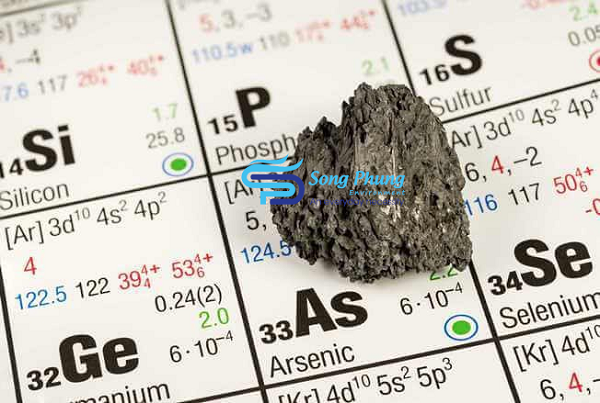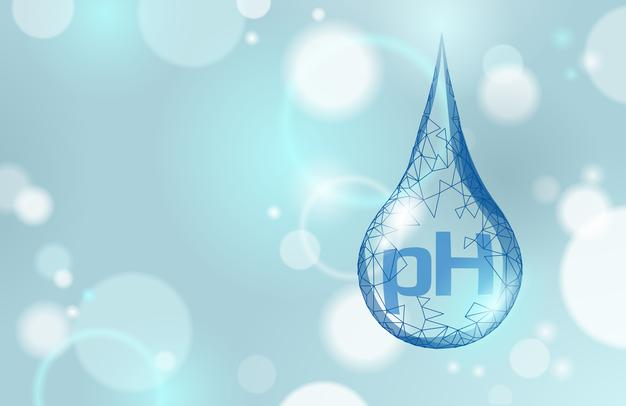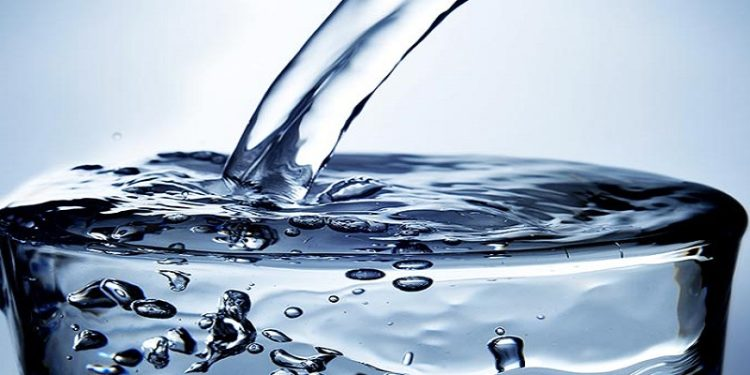What Is Arsenic? Arsenic is a chemical element that is abundant in nature, silvery white in color, as bright as tin, and brittle. Arsenic is divided into two types, organic and inorganic. Organic arsenic has no toxicity and is easily eliminated from the body. Meanwhile, inorganic arsenic is 4 times more toxic than mercury and adversely affects human health if exposed to long-term such as: digestive disorders, numbness of hands and feet, excessive hair loss, and increased blood pressure. pressure, etc. To avoid absorbing arsenic, you should use clean, treated water or advanced water purification technologies to remove residue.
What Is Arsenic?
Arsenic is a chemical element with the symbol As, atomic number 33, readily soluble in water. Arsenic element is a component of the sedimentary layer of the Earth’s crust, so it is abundant in nature and groundwater, but the content is very low.
Arsenic is classified into two types: organic arsenic and inorganic arsenic. Organic arsenic is formed during the decomposition of seafood, especially fish. Organic arsenic has no toxicity and is easily eliminated from the body without affecting human health. Meanwhile, inorganic arsenic is an extremely toxic chemical, 4 times more toxic than mercury. Inorganic arsenic and its compounds are used in the composition of wood preservatives, pesticides, and herbicides.

Arsenic exposure and exposure sites
Foods
Arsenic in food is mostly organic arsenic, which poses little danger to humans even though its content is quite high. Foods containing arsenic include: rice, cereals, mushrooms, seafood, fruits, etc. You should know this after learning “What is arsenic?”.
Exposure in the community
If you regularly inhale or eat foods high in arsenic, you will be exposed to arsenic. High arsenic areas to avoid are: industrial areas that use wood preservatives, areas near smelters, fields or orchards that use chemicals made from arsenic, glass factories, burning Tobacco or fossil fuels also release arsenic into the air. This is what you need to know after learning “What is arsenic?”.
Water source
Arsenic and its compounds can enter our water supply in many ways. Through agricultural activities, herbicides and pesticides will remain in large amounts in the soil, then they will gradually infiltrate and go to groundwater. For common drinking water sources, arsenic is also present in the mineral components present in the water.
The results of many studies have shown that the arsenic concentration in groundwater and wells is often much higher than in water from rivers and lakes. You should know this after learning “What is arsenic?”.
What is the allowable amount of arsenic in water?
According to the standards in Vietnam and many other regions in the world, 10 micrograms/liter (equivalent to 0.01 milligram) is the allowed amount of arsenic in water. If you use water containing arsenic levels above this threshold, there will be serious long-term health consequences. This is something that you need to keep in mind after learning “What is arsenic?”.

Common symptoms of drinking arsenic-contaminated water
The first symptoms after exposure to arsenic are thick horny patches on the extremities, soles, and palms that appear as warts-like nodules, then grow to the size of green beans or peanuts. Then they will spread into lumpy patches. The keratosis plaques are usually bilaterally symmetrical, and sometimes appear on the back, thighs, abdomen, arms, and legs. The skin in the horny areas may turn yellow and crack. You should know this after learning “What is arsenic?”.
After that, on the skin may appear small black and dark spots (highly raised or flat) everywhere, most often in covered areas such as abdomen, shins, chest. In addition, in the abdomen, chest, back, waist level, shins, forearms, there are small, flat, white nodules. During the early stages of arsenic exposure, skin pigmentation changes. This is something that you should keep in mind after learning “What is arsenic?”.

Fingers and toes are numb due to blockage of blood vessels in the extremities. The patient will feel numbness in the extremities and gradually feel a sharp pain. At the same time, the fingers and toes may become necrotic because there is no oxygen supply to the extremities. This is something that you should know after learning “What is arsenic?”.
In addition, other manifestations of arsenic exposure include: numbness in hands and feet, excessive hair loss, digestive disorders, cirrhosis of the liver, increased blood pressure, patchy skin darkening, miscarriage, low birth weight, intoxication. pregnancy,… You need to note this after knowing “What is arsenic?”.
What is the treatment of arsenic contaminated water?
In Vietnam, industrial water treatment in factories can partially remove arsenic in water. However, due to many problems in the operation of the water treatment system and the poor quality of water pipes, treated tap water in Vietnam is still at risk of high levels of arsenic.
To avoid absorbing arsenic, you should use clean, treated water sources or water purification technologies to remove any residue. You need to know this after learning “What is arsenic?”.
Besides, arsenic is a colorless, odorless, tasteless substance, so by ordinary senses, you cannot detect this residue in drinking water. To check whether your water source contains harmful arsenic residues, you need to bring a sample of drinking water for testing. This is something that you need to keep in mind after learning “What is arsenic?”.
Currently, the methods of treating arsenic in ordinary drinking water are quite complicated and not guaranteed. The best solution to this problem is to use an RO water purification system. Just invest in an RO water filter, you can use quality water for a long time. Core replacement should be done once or twice a year, depending on the quality of the tap water. This is to ensure that the water quality is always at a high level during use. If you have a need to buy a quality, good price RO water purification system, please contact Song Phung Environmental Company immediately for quick support and advice!

Above is basic information about what arsenic is, the allowable amount of arsenic in water and common symptoms of arsenic contamination. Hope you have learned more useful information to limit arsenic exposure. If you want to buy a quality water purifier at a good price for your family, Song Phung Environmental Company will be the perfect choice. Contact the hotline for advice and quick support!
>> See more: Summary of 15 questions about RO water filtration to help you answer all questions
15 questions about drinking water RO filtration system for your family
Translator: Duong Nguyen Hoang Khang













